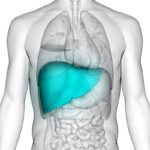[ad_1]
July 30, 2021 — Since the conception of anti-cancer drugs, they have been produced from plants, animals, and microorganisms. But these biological sources for the drugs often easily break down before reaching their targets.
To stop that deterioration, and to prevent side effects, scientists have searched for more effective way to deliver and release anti-cancer drugs at tumor sites.
Now, researchers have discovered 3D hydrophilic polymers, called hydrogels, that are effective drug delivery systems. Any drug put inside these hydrogels remain stable.
Imagine taking anti-cancer drugs, therapies, or procedures that don’t leave you with side effects like hair loss: This is the future that hydrogels promise.
“Although hydrogels are still in their infancy, they are in vogue and are slowly but surely coming out,” says Guillermo De Angulo, MD, of KIDZ Medical in Miami. Japan and China are leading the way to use these gels in medicine, he says.
Unlike traditional ways of treating cancer, which target rapidly dividing cells as well as healthy ones, “Hydrogels allow you to give targeted doses to the affected areas only,” say De Angulo and Ayoola Smith, a lecturer at the University of Lagos in Nigeria. Smith specializes in pharmacognosy, the study of drugs made from plants and natural sources.
“For hydrogels to be used in cancer therapy, they need to be responsive to the various stimuli in the tumor site,” he says.
In addition to being responsive to things like pH and temperature, hydrogels control the release of the anti-cancer drugs by shrinking or swelling, depending on the acidity of the tumor environment.
De Angulo says that with this feature, hydrogels are able to “enhance the delivery mechanism to the area in question.”
“In cases where tumor resection has been carried out, that is removal of cancerous tissues with small incisions, hydrogels are applied to those areas to attack cells unseen to the naked eye and improve the healing process as well,” he says.
Based on previous research from Japanese scientists, tumors work by reducing the pH of our body from 7.4 to an acidic pH. De Angulo believes these tumor cells use byproducts of cancer metabolism to reduce the body’s pH.





















